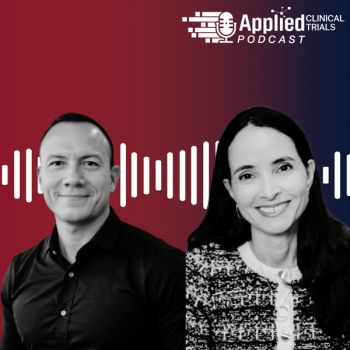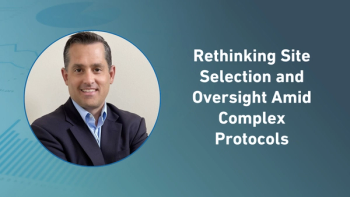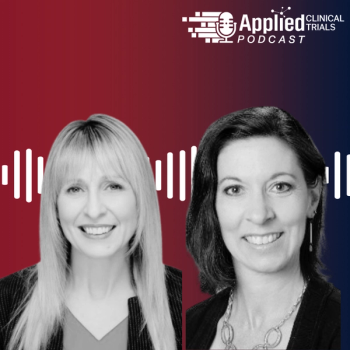
Tips on Improving Clinical Trial Study Site Qualification and Exposure
This article will describe my experiences in acquiring new clinical trials from the study site’s standpoint.
Investigators who are new, and who have already been exposed to clinical trials go through a daunting experience around navigating the industry to acquire new studies, working through highly regulated infrastructures, attempting to breakeven on operating clinical trials, enrolling patients, and generating quality data. Only 4% of investigators participate in clinical studies [
With the objective of increasing investigator participation in clinical research, I have become involved with growing clinical research departments at several medical institutions. This article will describe my experiences in acquiring new clinical trials from the study site’s standpoint.
Tip 1: Determine Study Site Specialties
I have learned that each medical research facility has very specific patient populations, specialized expertise and different needs. For example, a psychiatric medical institution was hesitant about filling their practice with schizophrenic patients, and a cardiology program at a large medical research institution was only interested in studies involving a specific medical device. Once I learned the specialties of each medical institution, we conducted aggregated data assessments of patient profiles to better understand the how to position the medical institution for clinical research. Upon evaluating principal investigator (PI) experience, interests, and the medical institutions patient population profiles, we were able to develop targeted strategies to acquire specific clinical trials that are likely to be a good match and enroll successfully.
Tip 2: Find the Studies and Enhance Site Exposure
Finding the right clinical trials for a PI and their medical institution is one of the most challenging aspects of acquiring new studies, especially for research naïve sites. The question here is, how do we find the right study at the right time and contact the right study team at the Sponsor?
We engaged in several clinical trial business development activities. We used our targeted study profiles to search for active studies and Sponsors on
At that time, we considered a different approach to enhance study site exposure: register for the Investigator Databank. The Investigator Databank is a global alliance between five biopharmaceutical enterprises with the goal of maximizing investigator exposure to Sponsors, and minimizing the administrative burden on sites when it comes to enhancing visibility. DrugDev, a technology company which enables Sponsors, CROs and investigators to do more trials together, powers the Investigator Databank.
Registering my sites on the Investigator Databank took about 30 minutes, and sites that were not already listed in the Investigator Databank required the assistance of an Investigator Databank representative, who responded in 1 business day to set up the account. Additionally, the Investigator Databank offers you the option to customize your site’s area of focus (i.e., disease modalities), uploading GCP certificates, and your site’s capabilities documents. The Investigator Databank recommends sites to upload TransCelerate’s Site Profile Form in order to better inform Sponsors about your site in a standardized format, and understand what types of capabilities your site needs to be equipped with.
So, what happens now? Your study site gets exposed to more than 3,000 global biopharmaceutical users who leverage the Investigator Databank to select study sites during trial feasibility. There are currently ~140,000 investigators in the Investigator Databank, and if sites opt into share their data, their site becomes visible to all five member Sponsors of the Investigator Databank and, dependent on permissions and privacy settings, companies who use DrugDev's SiteCloud platform including CROs, such as INC, and TransCelerate's Investigator Registry (launching later this year).
Although a big benefit of the Investigator Databank is increased site exposure, study sites have to wait to be contacted by Sponsors as opposed to looking for studies when the site has available capacity. However, the Investigator Databank is working on releasing a module in the future that allows study sites to contact study teams during the site feasibility phase - possibly prior to the information being available in public forums such as
Tip 3: Simultaneously, Build Proper Site Infrastructures
As the study site and PI gain exposure, initiate GCP training with the staff and the PI. While there are many free GCP training resources out there, an excellent and free certification program is the
Another aspect of study site setup is to ensure that you have proper study equipment, such as a secure location to maintain Trial Master Files, a room for on-site monitoring visits, access to a local lab (or an in-house lab with CLIA/CAP certifications), an affiliation with a Central or local IRB, and a freezer specifically for study drug with an electronic temperature logger (that way, you don’t have to manually maintain a temperature log), to name a few. Another important site set up facet includes developing SOPs for consenting, study documentation modification, quality assurance, misconduct, roles and responsibilities, and drug maintenance. Further, you must establish referral infrastructures with nearby medical practices and medical centers, should you need to access those channels for patients when the trial starts. For example, we established referral networks with nursing homes, neurologists, and other psychiatric institutions to create routes for Alzheimer’s patient referrals.
Stick to the 3 Tips, and You’ll Find Yourself Successfully Acquiring More Studies
Gaining exposure in clinical trials is not easy; a PI must have sufficient experience, the right patient populations, and there should be enough investments made by biopharmaceutical enterprises in specific disease modalities. Nonetheless, the steps mentioned above are a few of many strategies that study sites can use to approach the biopharmaceutical industry and acquire new clinical studies.
What is your approach?
References:
[2] Getz KA, Lamberti MJ. Global site landscape remains highly fragmented with variable performance. Tufts Center for the Study of Drug Development Impact Report. March/April 2013;15
Photos courtesy of
Newsletter
Stay current in clinical research with Applied Clinical Trials, providing expert insights, regulatory updates, and practical strategies for successful clinical trial design and execution.






.png)



.png)



.png)
.png)
